Minimalist landscape photography (see also my landscape prints) is one of the most beautiful photographic disciplines, at least for me. Just take the camera and go into nature. Here, more than in the other photographic disciplines, it is very important the daytime and weather condition. So go out during the golden hour or sometimes when the sky is interesting in some way. This may be for example before or after the storm or just any weather you find interesting.
Minimalist landscape and nature photography are great for those who like to spend time in nature. A lot of time in nature. So if you like walking and you like to take pictures, it can be the right discipline for you.
A lone trees
The following photo is of a group of three lone trees on the horizon. Simple composition, black and white, a seamless sky, and a simple winter field structure. All of this is a nice example of what minimalist photography can look like.
This image I captured during a family walk in Central Bohemia, near the small town of Milovice, where there is a wild horse nature reserve.
I shot it along the way when we were back in the car. There was not much light anymore because it was later in the afternoon. I increased the ISO to 200 and set the exposure compensation – I made the picture so much darker. I did it because I didn’t have a tripod, so I had to shoot only from a hand with a 300mm lens.
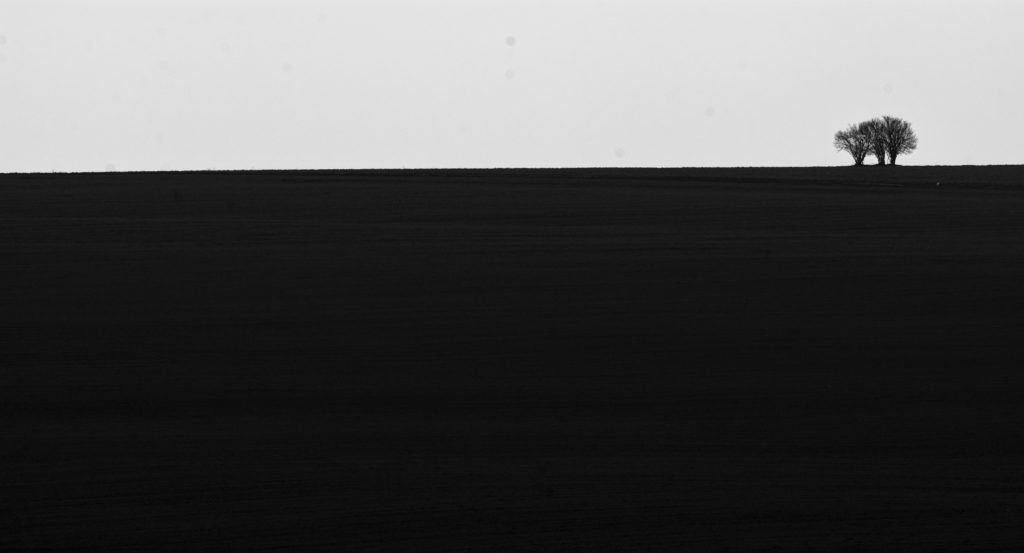
Forest in the Fog
This photo is of the winter forest covered in the fog I photographed near the town of Rokytnice nad Jizerou in the Giant Mountains, the highest mountain range in the Czech Republic. The forest occupying the entire area of the photo is a great subject for a minimalist photograph of landscapes. Only silhouettes of trees in the fog are in this photo but that day there was very interesting weather. On the top of the mountains was crystal clear blue sky and down in the valley was thick fog. Also, photos of autumn forests or forests at sunset or sunrise in any season can be very impressive.
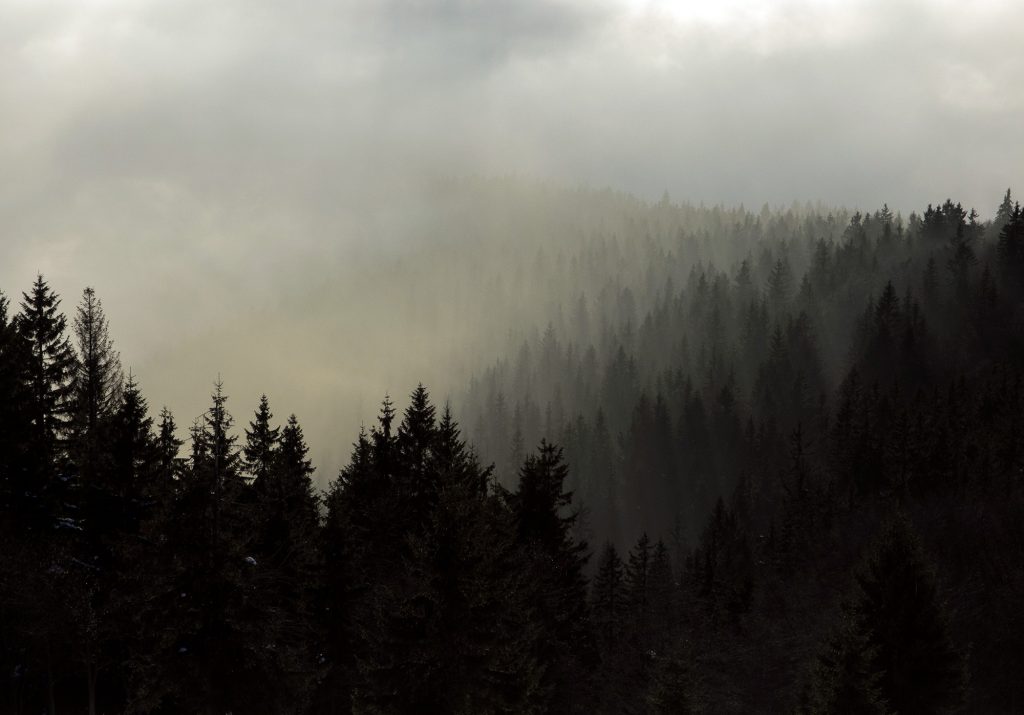
Row of trees
And the trees again. This time, there are two pictures of the same scene. The first one is shot with a Nikon Nikkor 35mm lens with f / 1.8 aperture. Why did I use such a low aperture for landscape photography? Actually, I do not know at all. Maybe because it was my new lens, the first prime lens. And because I liked the photos with the open aperture, I made almost everything with this setting. Even where it did not fit. The foreground (field) on the photo is therefore outside the field of sharpness. Well, today I would do it differently.
The second photo I photographed with the Nikon Nikkor basic lens 18-105 mm with the aperture set to f / 14. That’s much better for a landscape photo, is not it?
What is important, however, is that here you can see how the same landscape can be photographed in different ways with two different lenses.
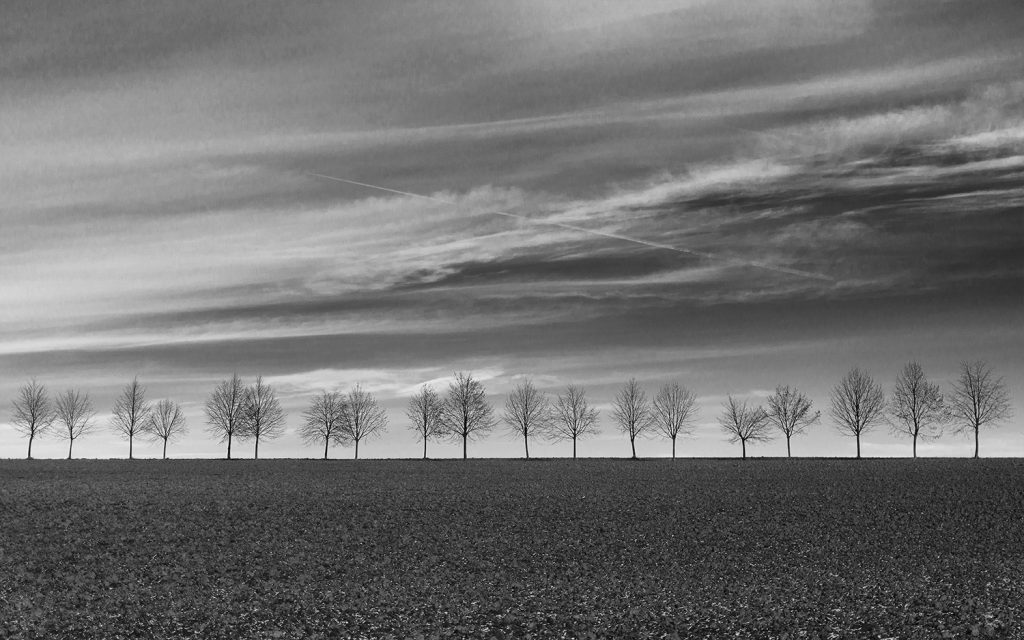
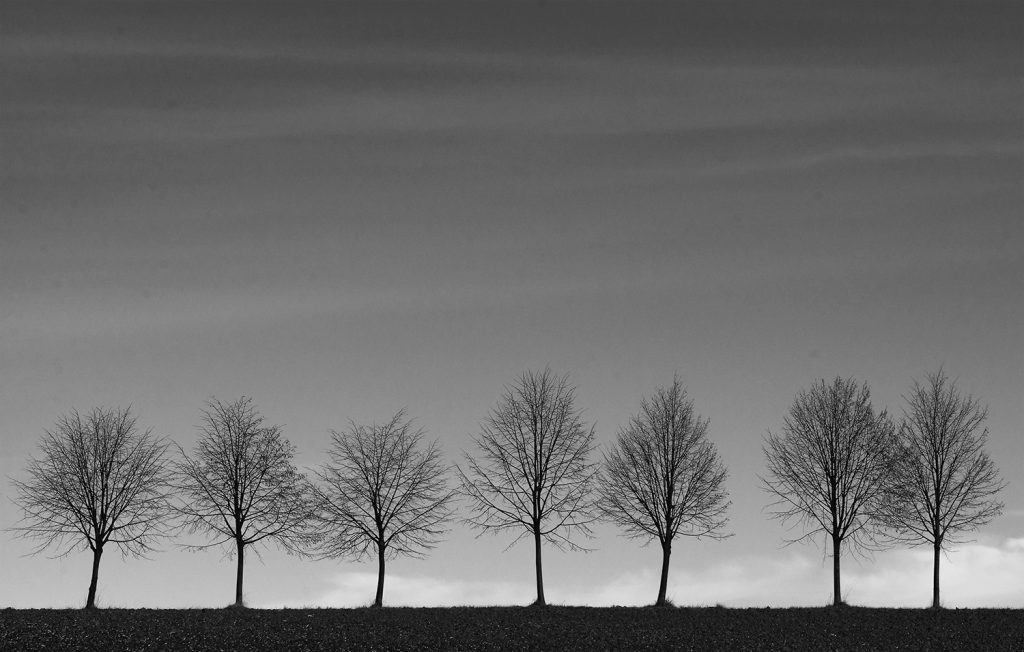
Minimalist landscape – Vineyard
And now we look at a similar case of two minimalist landscapes. In this case, however, both photographs are taken with the same 35mm lens from the same place.
In the first photo, the vineyard occupies most of the space, and the wooden building is on the left. In the second picture, most of the image is occupied by the sky, and the wooden building is on the right.
It’s very interesting how just turning the camera a bit differently creates a completely different picture.
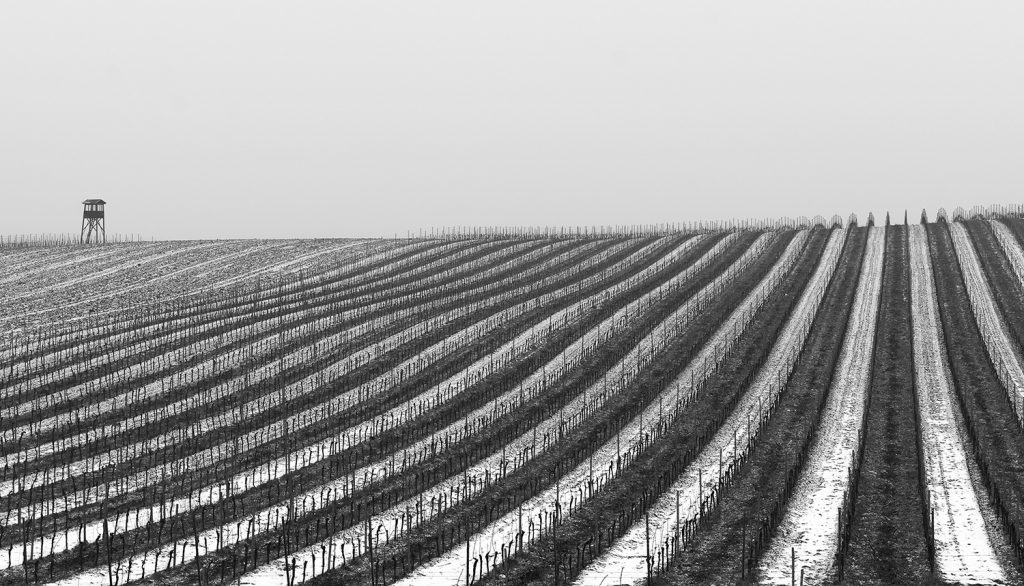

Field & Desert
In the following two photographs, a vertical field photo, and a Gobi desert photo, I want to show you how you can use split-to-thirds to create minimalist landscape photography.
I photographed the first photo of my wife’s parents’ cottage in Bohemian Paradise. Thirds in this photo are formed by a green field, a brown field, and a sky. Although horizontal photography is more suitable for landscapes, I photographed this image as well as vertically, and finally, I liked it more than the horizontal. The fact that fields are slightly sloping to the left gives the photo a little bit of dynamism. I photographed the photo with a wider lens – unlike the following photo.
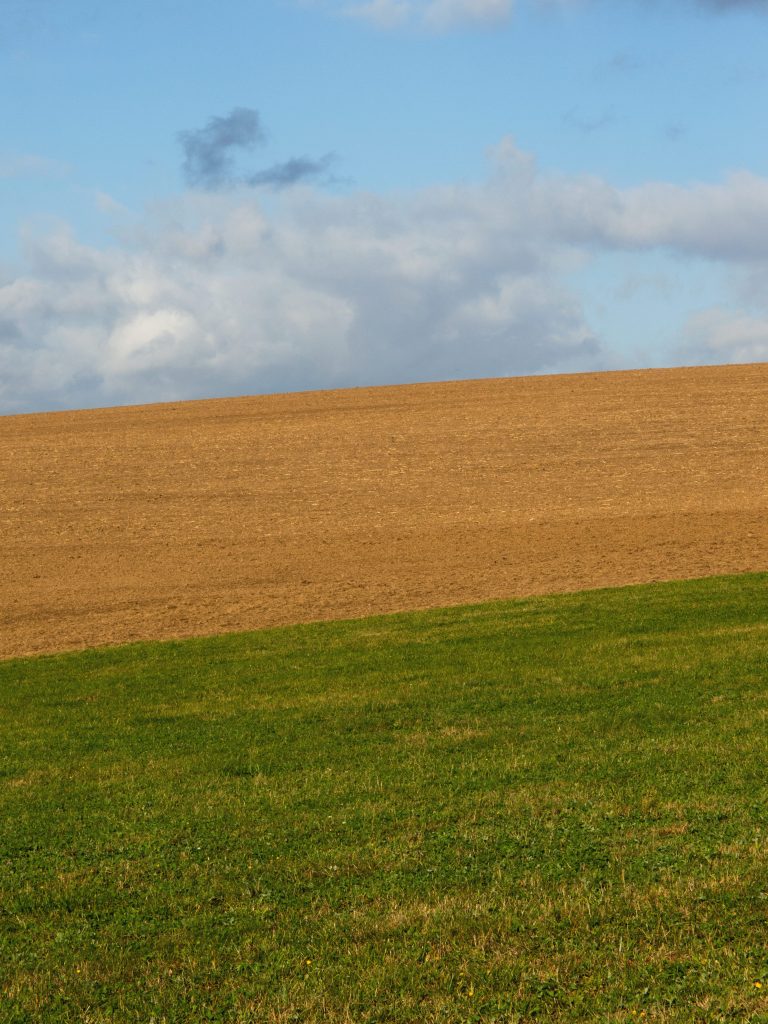
The second photo looks a bit like it was painted. But it’s not just because of post-production. I have achieved this effect by using a telephoto lens and also thanks to flickering hot air over the desert.
Three parts of this photograph are made up of deserts, dunes, and mountains, and there is no heaven at all. The lower part of the photo is formed by the Gobi desert with four yurts, in the middle part are the sand dunes and the upper part fills the mountains. Because I used a telephoto lens, it seems the mountains are right behind the dunes, even though they are a few miles away.
I photographed the photo in southern Mongolia in an area known as Khongoryn els – the largest sand dunes in Mongolia.
And what can you learn from it?
- Try to shoot vertically even when it is not common.
- Landscapes can be photographed not only with a wide-angle lens but also with a telephoto lens.
- Try to find a landscape in your neighborhood that can be divided into three parts.
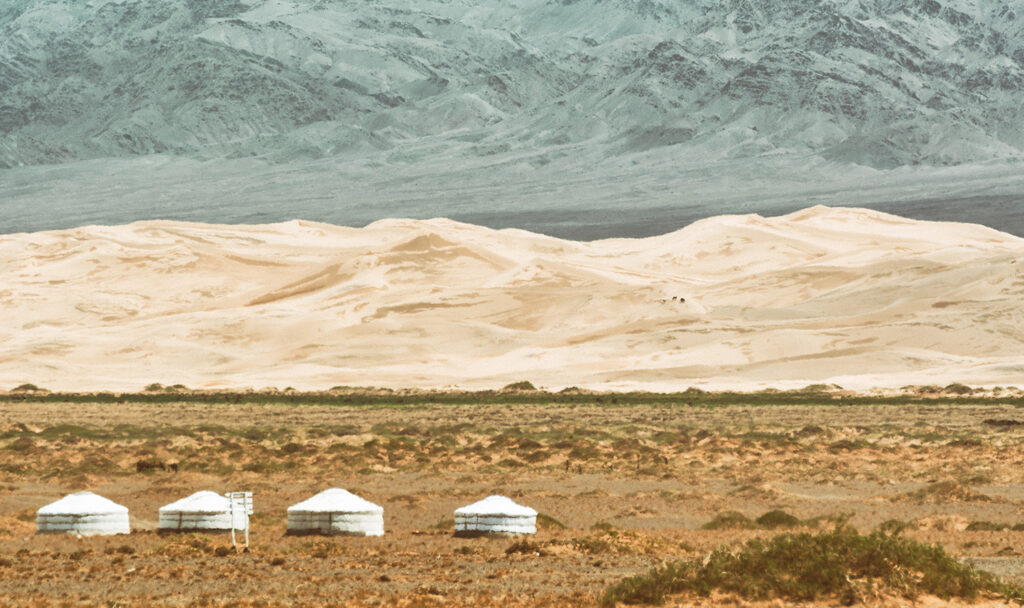
Sunset
Now we look at two minimalist landscape photos of the hill with Bezděz Castle taken from two completely different places.
The first photo came out when I drove in a car and this beautiful sunset made me stop. I took out the tripod and shot it until the sun had faded. I photographed the second photo near the cottage of my wife’s parents in Vyskeř village in Bohemian Paradise, Czechia. There are two photographs taken from a similar distance but from another side. One from the north and the other from the south.
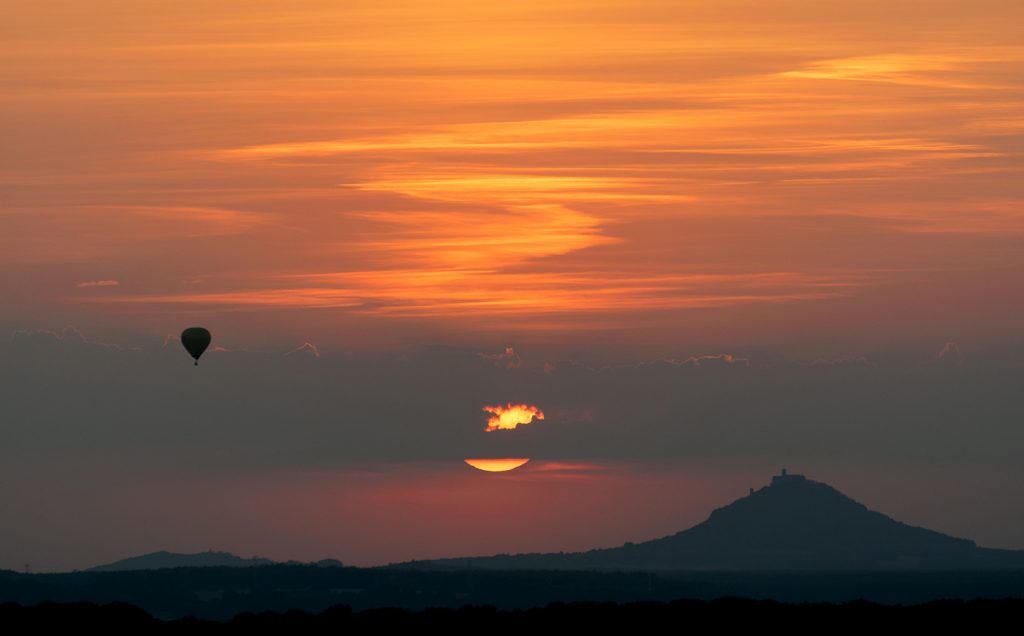
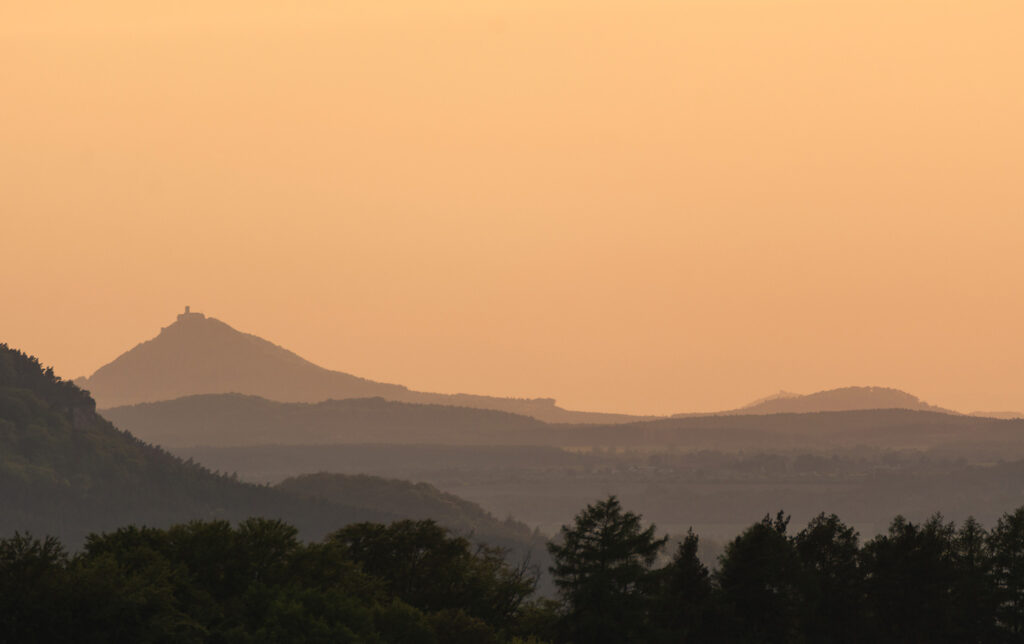
Your work is very good Martin.
Minimalism looks great with the Landscape theme.
I really like this 1st Photograph of the Lone Tree in Black and White.
Thank you very much!